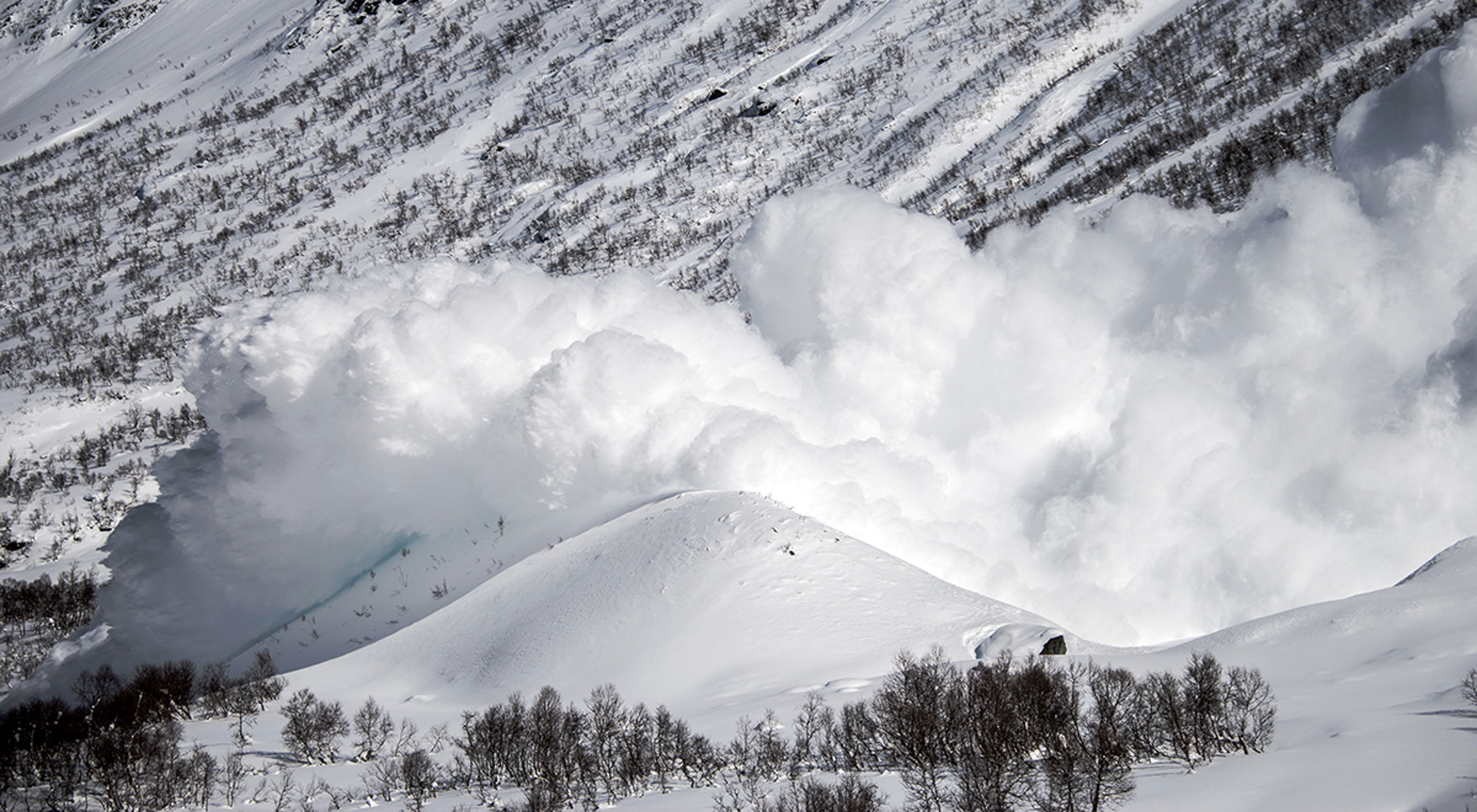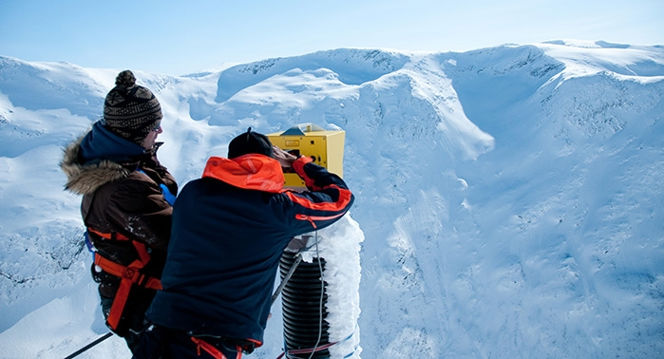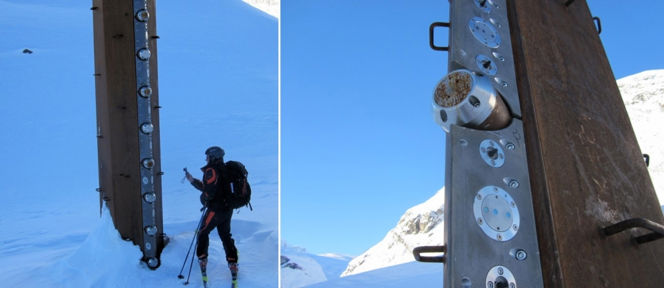Ryggfonn
The avalanche path in Ryggfonn has a drop height of 900 m and is one of the world's two full-scale test fields where avalanche research is conducted. Data from Ryggfonn is used to improve models for runoff and to design more effective protection measures against landslides.

Since the 1970s, NGI has carried out avalanche research on Strynefjellet, and an instrumented avalanche path in Ryggfonn with the possibility of artificially triggering avalanches was established in 1981. Instruments record speeds and forces in the avalanche, as well as the effect of a 15 m high protective embankment in the valley floor.
The avalanche path in Ryggfonn has a drop height of 900 m and a length of about 2100 m. The size of the avalanches usually varies from 2 (0.1 Gg) to 5 (100 Gg), measured in the Canadian avalanche classification system (McClung and Schaerer, 1993), and the speed can reach up to 60 m/s.

From the left: Triggering with the detonation of explosives - the avalanche starts when the shovel comes loose - avalanche and avalanche cloud on the way down the avalanche path - after the avalanche has stopped (at the avalanche embankment at the bottom of the avalanche path)
The connection between model and nature
Danger zone and risk mapping involve the calculation of runoff distances for avalanches. Data from Ryggfonn is used to develop, improve and calibrate dynamic models for landslide movement. Small-scale experiments are often more easily accessible, but scaling the models thus becomes a significant challenge.
Therefore, data from full-scale test fields such as Ryggfonn provide essential information. In addition, NGI has built a catch dam in the outlet area at Ryggfonn to study the effect of such safety measures.

Monitoring with a high-speed camera from the opposite mountain side of Ryggfonn in case of triggered avalanches
Instrumentation in Ryggfonn
Ryggfonn is now instrumented so that all avalanches that run in the avalanche path are automatically logged and provide valuable data on pressure and speeds.

Instrumented masts in the avalanche path measure the forces, pressure, and speed of the avalanche
In recent years, NGI has made considerable investments in upgrading and installing new measuring and monitoring equipment in the avalanche path, and in new equipment for triggering avalanches (Wyssen tower). The measuring equipment records, among other things, velocity and pressure profiles in front of and on the avalanche embankment. This provides completely new opportunities for analysing the interaction between avalanches and embankments. This underlines both the importance NGI places on the experiments in Ryggfonn and the international importance that the experimental field has.
Ryggfonn is one of the few large avalanches in the world that has been instrumented for full-scale experiments. The research here is done in collaboration with many other institutions, including the Institut für Lawinen- und Wildbachforschung, Innsbruck, Wildbach- und Lawinenverbauung/WLV Tirol, International Center for Geohazards, Universitat de Barcelona and the Norwegian Defense Winter School.

